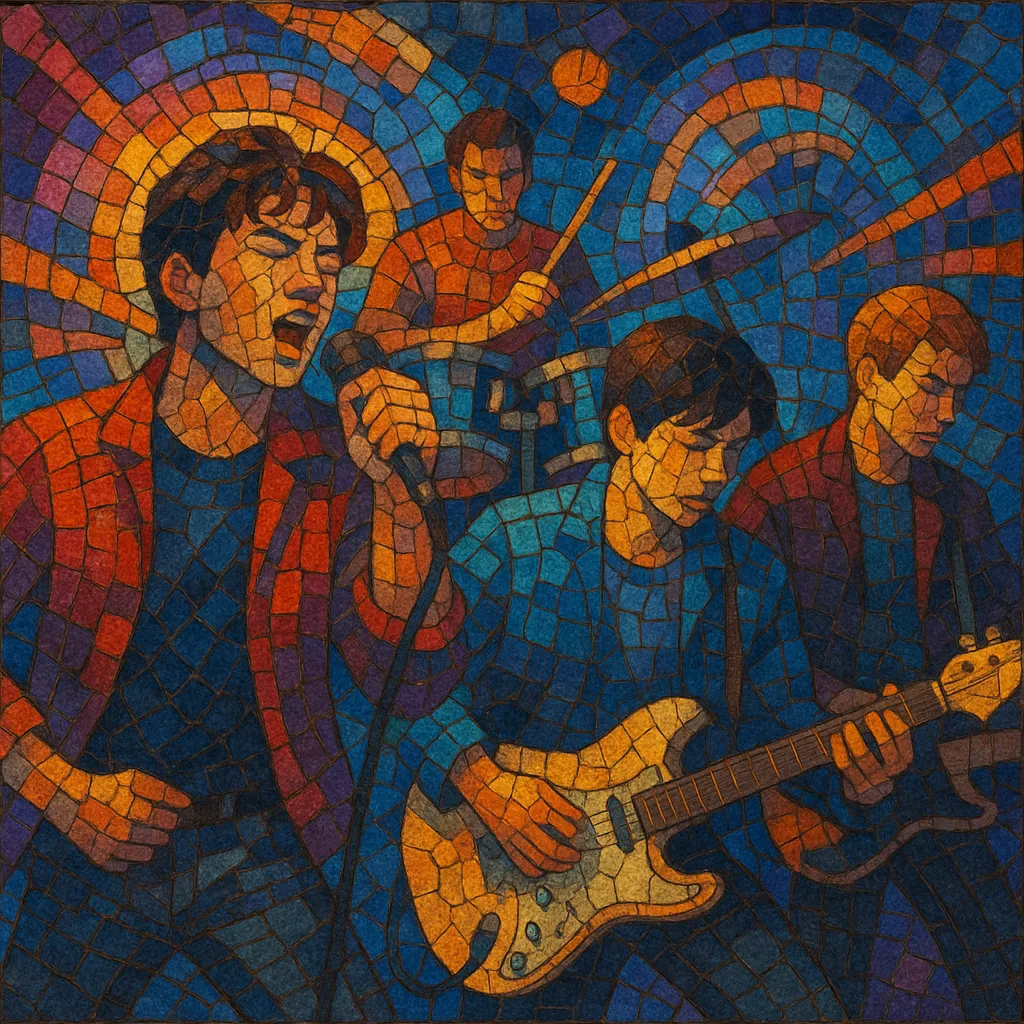Beat Rock is a Japanese mainstream rock style that emerged in the late 1980s, blending the punch and hooks of pop rock and power pop with the sleek, danceable pulse of new wave and synth-pop.
It is characterized by tight 8-beat drum grooves, bright guitar riffs (often with chorus effects), catchy sing-along choruses, and glossy, radio-ready production with gated reverbs and synth stabs. Many songs feature key changes for climactic final choruses, big backing-vocal harmonies, and a balance of urban nightlife imagery, youthful romance, and aspirational sentiment.
Although rooted in rock instrumentation, Beat Rock is unabashedly melodic and accessible, occupying a sweet spot between hard rock energy and J-pop immediacy. Its sound became a blueprint for much of Japan’s mainstream rock in the late 80s and early 90s and a frequent template for television and anime themes of the era.
Beat Rock took shape in Japan during the late 1980s, when rock bands began absorbing the sleek rhythms and production aesthetics of new wave and synth-pop while retaining guitar-driven songcraft. Acts streamlined arrangements around tight 8-beat grooves, polished choruses, and memorable guitar hooks, aligning rock with dancefloor-friendly backbeats and glossy studio techniques.
With the rise of televised music programs, advertising tie-ins, and major-label development, Beat Rock’s accessible melodies and big-chorus structures made it ideal for mass media. Bands achieved chart success with punchy singles that paired rock guitars with prominent keyboards and bright, anthemic vocals. The style’s high-impact, radio-ready sound helped it dominate late-80s/early-90s Japanese rock playlists.
As the 1990s progressed, Beat Rock’s vocabulary—danceable 8-beat drums, sparkling guitars, key-change finales, and hook-heavy choruses—became embedded in mainstream J-Rock and informed parts of Visual Kei’s pop-forward songwriting. Its influence continued through anime themes and major-label rock acts, leaving a durable template for catchy, tightly produced Japanese rock.


